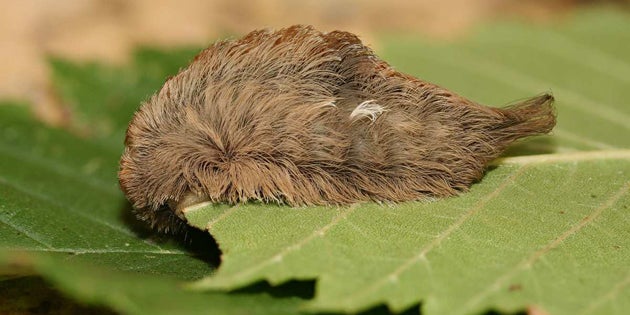These furry caterpillars look a lot like Donald Trump’s hair, but don’t be fooled – they pack a serious punch. In the past week, several children from Eastern states have been taken to the hospital after being stung by a puss caterpillar.
The caterpillars are definitely in Charleston, but College of Charleston biology professor Brian Scholtens says he hasn’t seen any more puss caterpillars than normal.
Scholtens says these are five things you need to know about puss caterpillars:
1. They sting.
The puss caterpillar has two rows of spines hidden below the soft looking hair. Scholtens says most people are stung when they lean up against one of the caterpillars on a tree trunk or if they try to pick up the caterpillar.
“Puss caterpillar stings typically hurt worse and for longer than the stings of other caterpillars,” Scholtens notes. “But the pain and length of time depends on a lot of factors. One of my students was stung and said his arm ached for several days.”
2. They’re most common on oak trees.
Puss caterpillars feed on oak tree leaves, which is why they are very common in Charleston.
3. You’ll only see them a few weeks during the year.
Puss caterpillars spend the majority of the year eating leaves high up on branches. In early September, they come down to form their cocoons on lower branches or other plants and that is when most people are stung. You’ll probably see them for three to four weeks.
RELATED: Learn more about puss caterpillars at Wired.com.
4. They’re not out to get you.
“I’ve never been stung by a puss caterpillar, and as an entomologist, I push my way through brush all the time,” Scholtens says. “They sting as a defense mechanism, so people shouldn’t live in fear of them, just pay attention.”
5. They’re not the only stinging caterpillars.
Scholtens says puss caterpillars are the most common stinging caterpillars found in urban areas, but they aren’t the only ones. Io moth caterpillars are also common in South Carolina and you’ll find them feeding on shrubs, like azaleas.






